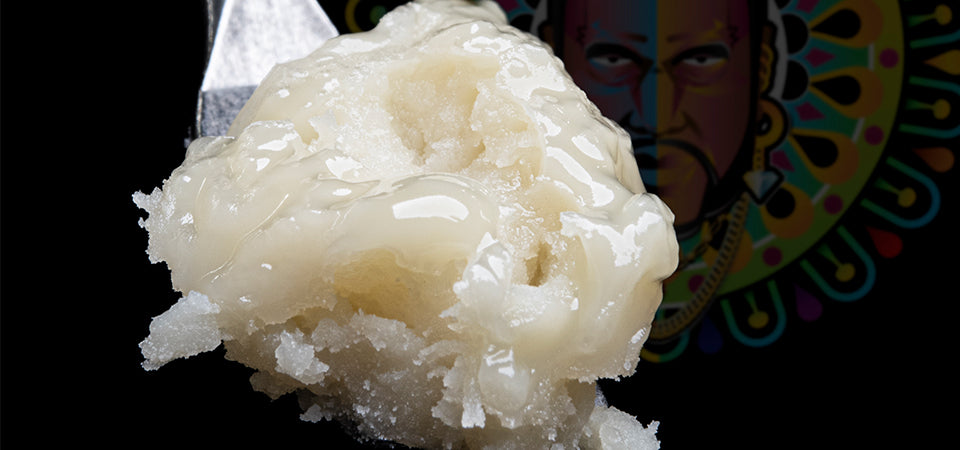How to Get the Perfect Rosin Press Temperature Every Time

A typical rosin press can reach temperatures as high as 300°F, but that doesn’t mean you should aim that high. Ultimately, you want to find a temperature that gives you the perfect balance of yield and terpene preservation. While there’s no “perfect” rosin press temperature, there are some general guidelines you can follow to achieve consistent, enviable results.
1. Use Colder Temperatures for Maximum Terpene Preservation
Cold rosin pressing typically occurs at a temperature between 140°F and 180°F. This is the perfect range to minimize terpene loss. There are over 150 terpenes native to cannabis, and most start to degrade at temperatures close to 200°F. Some of the most volatile terpenes can even start to degrade at temperatures below 100°F.
If you want to maintain the maximum terpene profile, cooler is better. The downside is that you end up with a lower yield. So experiment with temperatures between 130°F and 170°F, and determine where you find the perfect balance between flavor and yield.
2. Use Colder Temperatures to Achieve a Buttery Consistency
Cooler temperatures won’t just give you a higher terpene content; they’ll often give you a softer and more buttery consistency, as you need a lot of heat to harden the trichomes.
For instance, if you want to make solventless shatter that breaks apart in your hands, you’ll need to work with a temperature north of 200°F. However, for a batter or budder-like consistency, stay in the cold-pressing range.
It’s worth noting, however, that not all strains respond to temperature the same way. So you might have to do a bit of trial and error to achieve the perfect consistency for your needs.
3. Use Colder Temperatures to Achieve a Golden Hue
The color of an extract can affect its perceived value in the eyes of many consumers. If presentation is an important factor for you, stay closer to the cold-pressing range. At lower temperatures, you’re more likely to achieve the kind of golden or amber color that consumers love. The hotter you go, the darker your color will become.
As long as you stay below 200°F, your color shouldn’t suffer too much. However, if you can keep it closer to the 140°F to 180°F range, your color will really stand out for all the right reasons.
There are greater factors at play when it comes to color that should also be considered while on the subject. Strain, age of material, when it was processed in its flowering process, and how it was harvested all play very significant roles in the color of your material.
4. Use Warmer Temperatures for Flower and Sift
When deciding on the ideal rosin press temperature, you also have to consider your starting material. Less refined materials like flower and dry sift typically require higher temperatures, generally within the 180°F to 200°F range. This will help to release more of the resin while eliminating more of the unwanted plant material.
If you have a really high-quality starting material like bubble hash or full-melt dry sift, it’s better to stay in the cold-pressing temperature range so that you don’t sacrifice the quality you’ve already worked hard to achieve. Besides, these higher-quality extracts are already partially refined and easy to melt, so you don’t need to apply high temperatures. You just want to refine what you already have.
5. Always Stay Below 220°F for Standard Rosin Extraction
As a general rule of thumb, it’s always best to stay at or below 220°F when extracting rosin. If you allow the temperature to creep above that range, you risk excessive terpene loss.
With that said, however, it’s okay to experiment and see what works for you. We’ve known extractors who pressed flower in the 220°F range and were happy with the results, but you’ll need to proceed with caution.
6. Apply Maximum Heat for THCA Separations
The one time you’ll likely need to hit the 300°F threshold (or at least close to it) is when you’re doing THCA separations. With a high-quality rosin press, you can create THCA diamonds and capitalize on a growing industry trend.
However, there’s a fine art to THCA extractions. You’ll generally need to press your rosin several times, first at lower temperatures (around 200°F) and ultimately at higher temperatures close to the 300°F range. Refer to our guide to solventless THCA separation for more information.
7. Know That Your Results and Preferences May Vary
All of the tips on this list are just that: tips. If you truly want to get the temperature right every time, it pays to experiment, refine, and discover your own secret sauce.
The temperature ranges on this list will help you to avoid a lot of the common disasters, but once you understand the basic parameters along with the pros and cons of various temperatures, you can play around with it and decide what works best for you.
8. Balance Your Time and Temperature
Your chosen temperature will dictate how long you can get away with pressing rosin. The colder the temperature, the longer you can press rosin.
For a cold press, you can usually get away with intervals of up to 5 minutes. When hot pressing, you might only press for as little as 45 seconds to a minute. Be mindful of your pressing times and also how much pressure you’re using.
Explore the Possibilities With Your Rosin Press Temperature
Finding the right temperature is all about knowing what you want to achieve. Consider your starting materials, your desired yield, your desired terpene concentration, and your desired color. When you have a goal in mind, you’re halfway there.
Once you find your ideal rosin press temperature and pressing time, make sure to remember it. Hopefully you’re using a quality rosin press that allows you to set custom recipes. For instance, our new LT3 Heat and Pressure Controller makes it easy to program and implement precise temperature and pressure controls, and it’s compatible with all Lowtemp rosin presses, cage kits, and plate kits.
When you can deliver premium, consistent results with each press, you have a product you can take to the bank.



